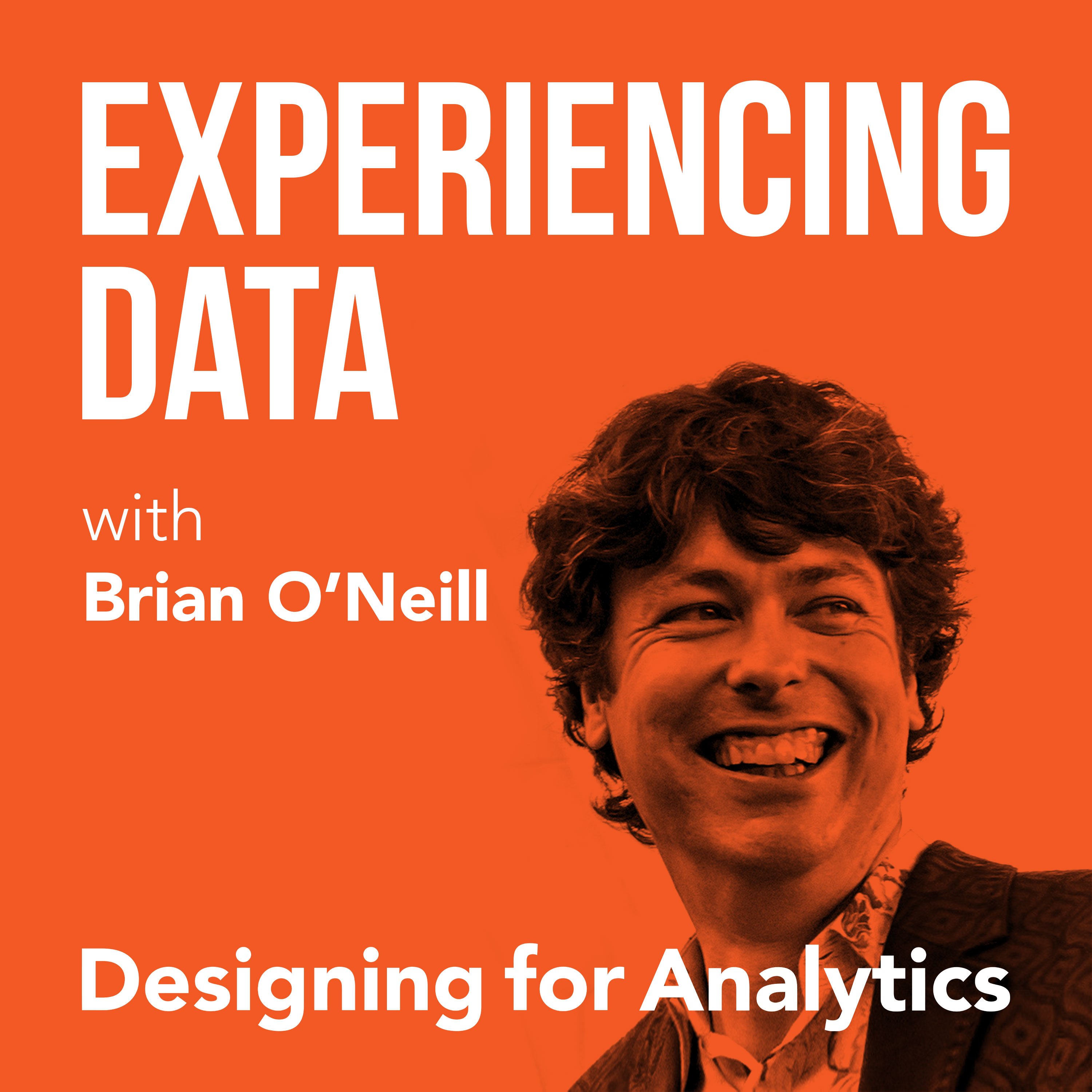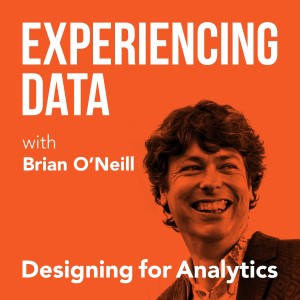

152.2K
Downloads
182
Episodes
Is the value of your enterprise analytics SAAS or AI product not obvious through it’s UI/UX? Got the data and ML models right...but user adoption of your dashboards and UI isn’t what you hoped it would be?
While it is easier than ever to create AI and analytics solutions from a technology perspective, do you find as a founder or product leader that getting users to use and buyers to buy seems harder than it should be?
If you lead an internal enterprise data team, have you heard that a ”data product” approach can help—but you’re concerned it’s all hype?
My name is Brian T. O’Neill, and on Experiencing Data—one of the top 2% of podcasts in the world—I share the stories of leaders who are leveraging product and UX design to make SAAS analytics, AI applications, and internal data products indispensable to their customers. After all, you can’t create business value with data if the humans in the loop can’t or won’t use your solutions.
Every 2 weeks, I release interviews with experts and impressive people I’ve met who are doing interesting work at the intersection of enterprise software product management, UX design, AI and analytics—work that you need to hear about and from whom I hope you can borrow strategies.
I also occasionally record solo episodes on applying UI/UX design strategies to data products—so you and your team can unlock financial value by making your users’ and customers’ lives better.
Hashtag: #ExperiencingData.
JOIN MY INSIGHTS LIST FOR 1-PAGE EPISODE SUMMARIES, TRANSCRIPTS, AND FREE UX STRATEGY TIPS
https://designingforanalytics.com/ed
ABOUT THE HOST, BRIAN T. O’NEILL:
https://designingforanalytics.com/bio/
Episodes

Tuesday Oct 15, 2024
Tuesday Oct 15, 2024
Sometimes DIY UI/UX design only gets you so far—and you know it’s time for outside help. One thing prospects from SAAS analytics and data-related product companies often ask me is how things are like in the other guy/gal’s backyard. They want to compare their situation to others like them. So, today, I want to share some of the common “themes” I see that usually are the root causes of what leads to a phone call with me.
By the time I am on the phone with most prospects who already have a product in market, they’re usually either having significant problems with 1 or more of the following: sales friction (product value is opaque); low adoption/renewal worries (user apathy), customer complaints about UI/UX being hard to use; velocity (team is doing tons of work, but leader isn’t seeing progress)—and the like.
I’m hoping today’s episode will explain some of the root causes that may lead to these issues — so you can avoid them in your data product building work!
Highlights/ Skip to:
- (10:47) Design != "front-end development" or analyst work
- (12:34) Liking doing UI/UX/viz design work vs. knowing
- (15:04) When a leader sees lots of work being done, but the UX/design isn’t progressing
- (17:31) Your product’s UX needs to convey some magic IP/special sauce…but it isn’t
- (20:25) Understanding the tradeoffs of using libraries, templates, and other solution’s design as a foundation for your own
- (25:28) The sunk cost bias associated with POCs and “we’ll iterate on it”
- (28:31) Relying on UI/UX "customization" to please all customers
- (31:26) The hidden costs of abstraction of system objects, UI components, etc. to make life easier for engineering and technical teams
- (32:32) Believing you’ll know the design is good “when you see it” (and what you don’t know you don’t know)
- (36:43) Believing that because the data science/AI/ML modeling under your solution was, accurate, difficult, and/or expensive makes it automatically worth paying for
Quotes from Today’s Episode
- The challenge is often not knowing what you don’t know about a project. We often end up focusing on building the tech [and rushing it out] so we can get some feedback on it… but product is not about getting it out there so we can get feedback. The goal of doing product well is to produce value, benefits, or outcomes. Learning is important, but that’s not what the objective is. The objective is benefits creation. (5:47)
- When we start doing design on a project that’s not design actionable, we build debt and sometimes can hurt the process of design. If you start designing your product with an entire green space, no direction, and no constraints, the chance of you shipping a good v1 is small. Your product strategy needs to be design-actionable for the team to properly execute against it. (19:19)
- While you don’t need to always start at zero with your UI/UX design, what are the parts of your product or application that do make sense to borrow , “steal” and cheat from? And when does it not? It takes skill to know when you should be breaking the rules or conventions. Shortcuts often don’t produce outsized results—unless you know what a good shortcut looks like. (22:28)
- A proof of concept is not a minimum valuable product. There’s a difference between proving the tech can work and making it into a product that’s so valuable, someone would exchange money for it because it’s so useful to them. Whatever that value is, these are two different things. (26:40)
- Trying to do a little bit for everybody [through excessive customization] can often result in nobody understanding the value or utility of your solution. Customization can hide the fact the team has decided not to make difficult choices. If you’re coming into a crowded space… it’s like’y not going to be a compelling reason to [convince customers to switch to your solution]. Customization can be a tax, not a benefit. (29:26)
- Watch for the sunk cost bias [in product development]. [Buyers] don’t care how the sausage was made. Many don’t understand how the AI stuff works, they probably don’t need to understand how it works. They want the benefits downstream from technology wrapped up in something so invaluable they can’t live without it. Watch out for technically right, effectively wrong. (39:27)
No comments yet. Be the first to say something!